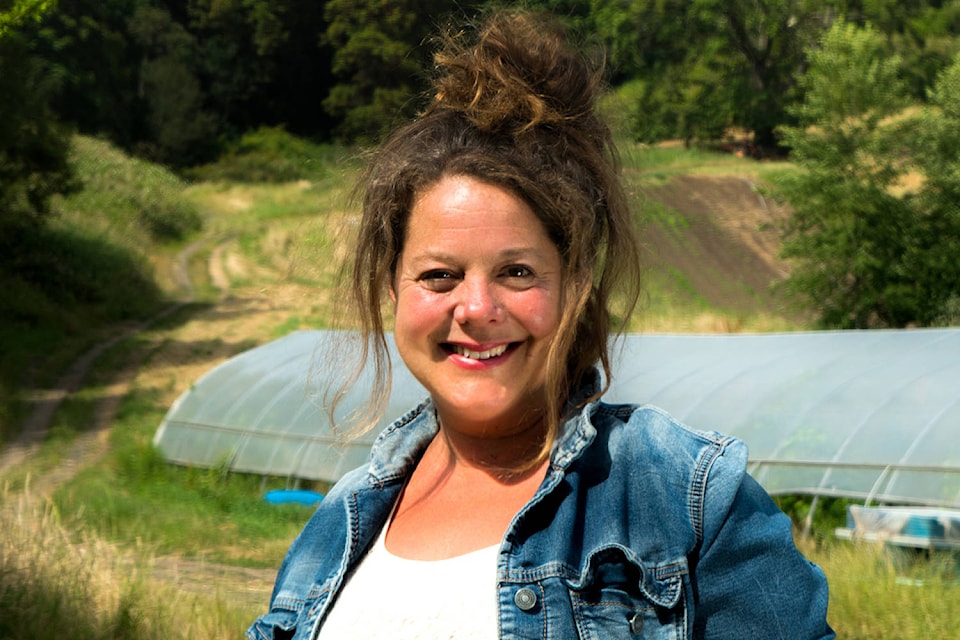Objections from staff and a majority of speakers during a public hearing did not stop Saanich council from endorsing plans for a new subdivision at the very edge of the Urban Containment Boundary (UCB).
With Couns. Judy Brownoff and Nathalie Chambers opposed, council voted 7-2 in favour of plans to rezone, then subdivide portions of 3989 Holland Ave. in the Blue Ridge area, citing the need for additional housing. Pending fulfillment of a covenant, this vote paves the way for a project whose critics fear will undermine agriculture and green space in Saanich.
Holland Road resident Sue Henry said the development encourages urban sprawl and threatens the integrity of the UCB in violation of the Official Community Plan. Worse, she suggested, it sets a precedent for comparable developments elsewhere, a claim staff later rejected.
RELATED: Saanich postpones plans for rezoning and subdivision over Garry oak trees
Critics focused on the issue of buffering by pointing out that filling in part of the lot with three additional homes — albeit on smaller lots — would take away an ecological buffer, while also raising the threat of rural-urban conflict.
The family submitting the application farms portions of the the property west of the proposed subdivision, with a family-owned dwelling separating the farmed land from the proposed residential area. The family, who plans to replace the existing home with a new home, has promised to maintain a buffer separating their future new home and the farmed land.
But this promise did not ease Brownoff’s concerns. This development is not about housing but about buffering for farming, she said. “This is a small enclave, so I do not support reducing the lot size to RS-6 around farming zones, because of impacts and complaints.”
RELATED: Protecting farmland, but at what cost?
The public also heard concerns about the loss of trees, with seven out of 15 identified trees coming down. While the applicant has promised to replace the lost trees by a two-to-one ratio, Saanich staff said in their formal opposition to the project that the loss of established urban canopy would undermine the environment and efforts to fight climate change.
Staff also initially doubted whether the applicant could fulfill promises to protect remaining trees as the development would require blasting to extend various municipal services to the subdivision.
“Although [staff] is in support of the covenant areas, they are of the opinion that extraordinary measures will be required to achieve retention of the trees during servicing and house construction,” it reads.
Chambers picked up on these points when she accused project supporters of hypocrisy, noting Saanich had rejected a comparable proposal in 2008, albeit outside the UCB, only to bring it back now, weeks after the region had declared a climate change emergency.
RELATED: Lack of security: why Vancouver Island food production is on the decline
“Bio-diversity does not become any less important in a climate change emergency,” she said. “In fact, it becomes more.”
Using rural land for housing undermines the health and food security of all Saanich residents, even if it creates in-fill housing with secondary suites, said Chambers, citing her credentials as an organic farmer. “I’m not a farmer who would ever cut down trees,” she said.
Supporters of the project, however, pointed out that the area has already experienced in-fill. Admitting that the decision is difficult, Coun. Karen Harper said the project, albeit small, will encourage a diversity of housing in an area inside the UCB awaiting development.
Coun. Ned Taylor acknowledged the loss of green space, but based his support on the need for more affordable housing. The three lots and the homes that will stand on them will be small and more affordable, he said.
Mayor Fred Haynes also defended the project, saying that it gives the applicant some equity to continue farming.
“What I see here is an opportunity to support a family that has come from farming in their homeland and wants to continue farming in Canada to help us deal with the climate change emergency, the need for local food, the need for local agriculture,” he said in reference to the fact that the family will continue to farm portions of the lot.
